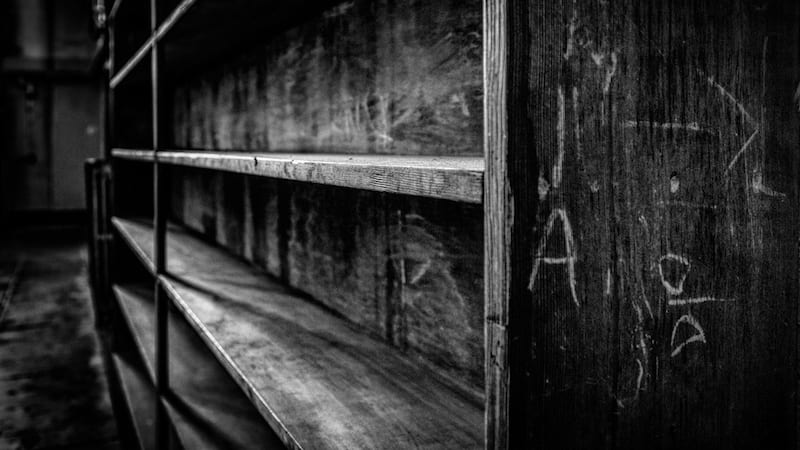Kids who are surrounded by books have a better chance of succeeding. But as teachers know very well, access to print material can depend heavily on where you live.
In many of our students’ neighborhoods, it’s close to impossible to buy a book or easily get to a library. And now researchers are starting to pay attention.
The Rise of “Book Deserts”
The intense disparities in access to reading material in Detroit, Los Angeles, and Washington, D.C., were outlined in a study published in Urban Education in July 2016.
Researchers focused on two poor neighborhoods in each city and found just two percent of the businesses sold print materials for children (fiction and non-fiction books, as well as newspapers and magazines). And many of them were dollar stores. Middle-income neighborhoods had 16 times more books available for sale than low-income neighborhoods in the three cities studied.
“There are structural inequalities in these neighborhoods,” says Susan Neuman, co-author of the study and professor of childhood and literacy education at New York University. “As a result, we say to families: ‘Read to your children, read to your children.’ But the question is: ‘What is there to read?’ There is nothing in your environment that allows you to do that.”
And of course, ordering books online is not always simple. Only a little more than half of low-income families with children under eight have access at high-speed internet at home, according to a 2013 study.
What Organizations Are Doing to Help
Here’s the good news. As the problem garners attention, school, publishers, libraries, and non-profits are responding. There are projects to give away books, promote library cards, and collaborate to get more reading material in the hands of students in disadvantaged neighborhoods.
The Book Rich Environment Initiative aims to give away nearly 300,000 books to low-income children this year. The project is a partnership between the National Book Foundation, the U.S. Department of Housing and Urban Development, the U.S. Department of Education, the Urban Libraries Council and the Campaign for Grade Level Reading.
The children’s books, donated by Penguin Random House, Hachette Book Group, Macmillan Publisher and others, will be distributed through public housing authorities in the spring, summer and fall, says Lisa Lucas, executive director of the National Book Foundation in New York. Public libraries will hold related literacy events in the community in conjunction with book drops.
The hope is to create a joy around reading and encourage kids to value books she says. “The message is that books are important,” says Lucas. “There should be a place in all of our lives for reading and I think this helps start that conversation,” says Lucas, who hopes to continue the initiative’s work beyond the scope of this year.
Schools Are Working With Libraries
There may not be many books stores in low-income neighborhoods, but there are often libraries. Still, transportation and fines can be barriers, says Emily Samose, director of education and learning initiatives at the Urban Libraries Council in Washington, D.C. While “book desert” may be a new buzz phrase, the issue has long been a problem and her organization is working to raise awareness about library resources and come up with creative solutions.
For instance, some libraries collaborate with schools to let kids use their student ID numbers to check out books, says Samose. The Obama administration and U.S. Department of Education in 2015 pushed to issue library cards to more than one million school children. The ConnectEd Library Challenge involved 60 communities and established partnerships between elected officials, school superintendents, and library directors.
Samose suggests that libraries can work with educators to set up online access in the schools to public library resources. Schools can also share data, such as reading scores for students, to gauge if summer literacy programs are having an impact.
Further, Neuman recommends that teachers create classroom lending libraries—even if it means the occasional book disappears. She also suggests keeping the school media center open after hours so parents can have lending privileges.
Stronger Together
Librarians at the Marin City Library in Marin City, California, have reached out to their local schools to encourage kids to use their resources. Librarian Diana Lopez says the low-income area around her library branch could be considered a book desert with many empty storefronts and the closest book store five miles away.
Last year, the city librarians gave all kids in grades K-8 at nearby Bayside Martin Luther King, Jr., Academy their own library cards. The library worked with the school to get the student data and inform parents. No one opted out and cards were presented by the librarians at school to the 150 students in donated backpacks filled with school supplies.
“The kids were so excited,” recalls Lopez. To make sure everybody was included, kids with existing library cards received a reprint and any outstanding fines were waived. (The library no longer charges fines for juvenile items.) As a result, traffic at the library is up, with some kids coming daily.
The librarians were also invited to the Bayside to hold a weekly Maker Club, where they got to know many of the students through supervising hands-on projects, such as creating stomp rockets. The public library and school administrators are working together to give books and activities to kids in the local housing projects.
Lopez says they want to seize the opportunity to tell parents about materials available at the library to support their kids, such as online homework help. “We are focused on bridging theses equity gaps,” she says. “I encourage schools to reach out to libraries. There is so much we can do for them.”
When schools can build relationships with library directors, everyone benefits, agrees Samose. “You are working with the same community, with shared outcome goals for the health and learning of community members,” says Samose. “You are stronger when you are working on it together.”

